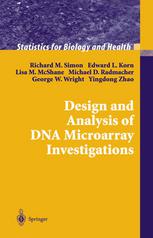

Most ebook files are in PDF format, so you can easily read them using various software such as Foxit Reader or directly on the Google Chrome browser.
Some ebook files are released by publishers in other formats such as .awz, .mobi, .epub, .fb2, etc. You may need to install specific software to read these formats on mobile/PC, such as Calibre.
Please read the tutorial at this link: https://ebookbell.com/faq
We offer FREE conversion to the popular formats you request; however, this may take some time. Therefore, right after payment, please email us, and we will try to provide the service as quickly as possible.
For some exceptional file formats or broken links (if any), please refrain from opening any disputes. Instead, email us first, and we will try to assist within a maximum of 6 hours.
EbookBell Team

4.3
28 reviewsThis book is targeted to biologists with limited statistical background and to statisticians and computer scientists interested in being effective collaborators on multi-disciplinary DNA microarray projects. State-of-the-art analysis methods are presented with minimal mathematical notation and a focus on concepts. This book is unique because it is authored by statisticians at the National Cancer Institute who are actively involved in the application of microarray technology.
Many laboratories are not equipped to effectively design and analyze studies that take advantage of the promise of microarrays. Many of the software packages available to biologists were developed without involvement of statisticians experienced in such studies and contain tools that may not be optimal for particular applications. This book provides a sound preparation for designing microarray studies that have clear objectives, and for selecting analysis tools and strategies that provide clear and valid answers. The book offers an in depth understanding of the design and analysis of experiments utilizing microarrays and should benefit scientists regardless of what software packages they prefer. In order to provide all readers with hands on experience in data analysis, it includes an Appendix tutorial on the use of BRB-ArrayTools and step by step analyses of several major datasets using this software which is freely available from the National Cancer Institute for non-commercial use.
The authors are current or former members of the Biometric Research Branch at the National Cancer Institute. They have collaborated on major biomedical studies utilizing microarrays and in the development of statistical methodology for the design and analysis of microarray investigations. Dr. Simon, chief of the branch, is also the architect of BRB-ArrayTools.